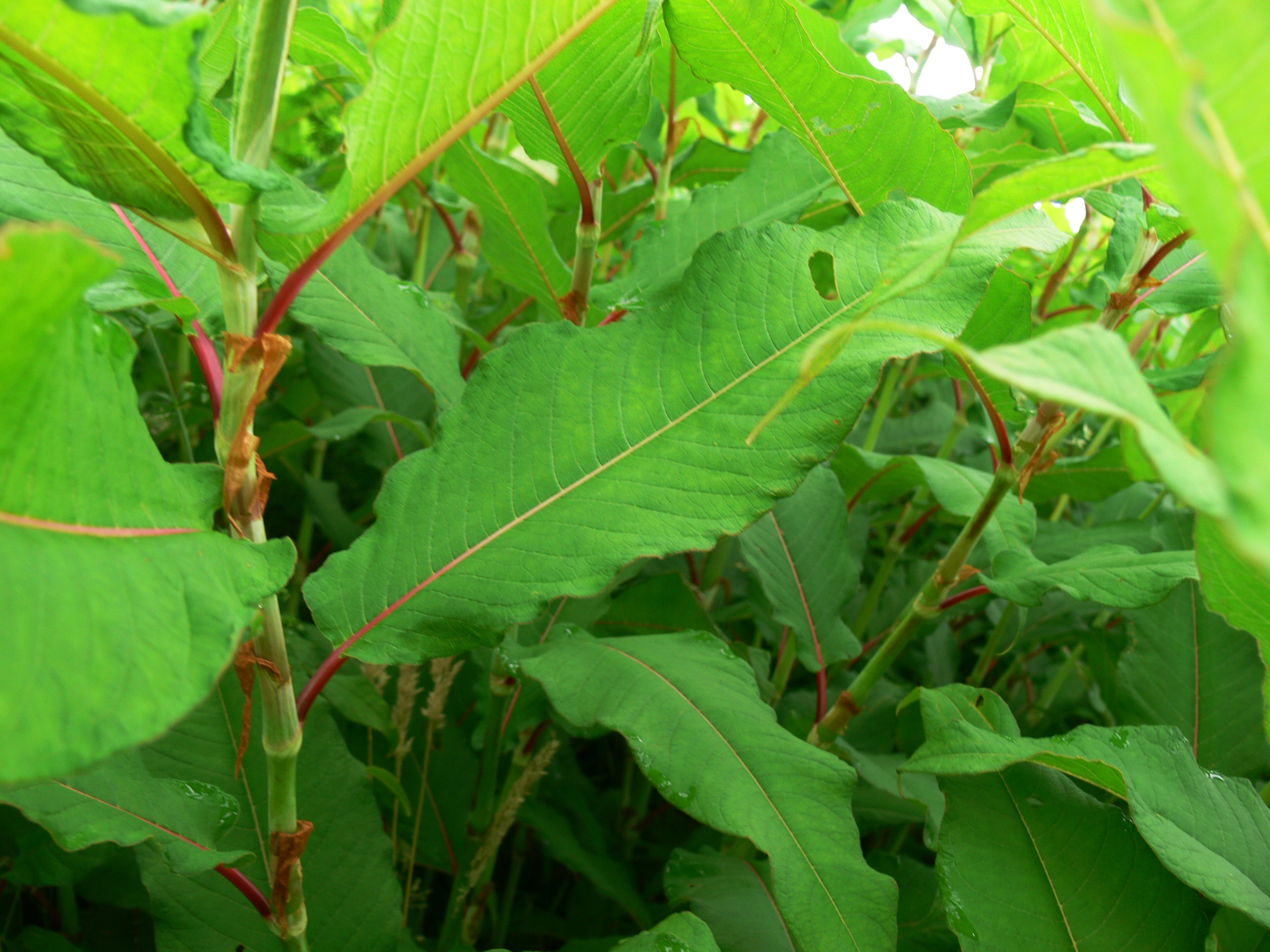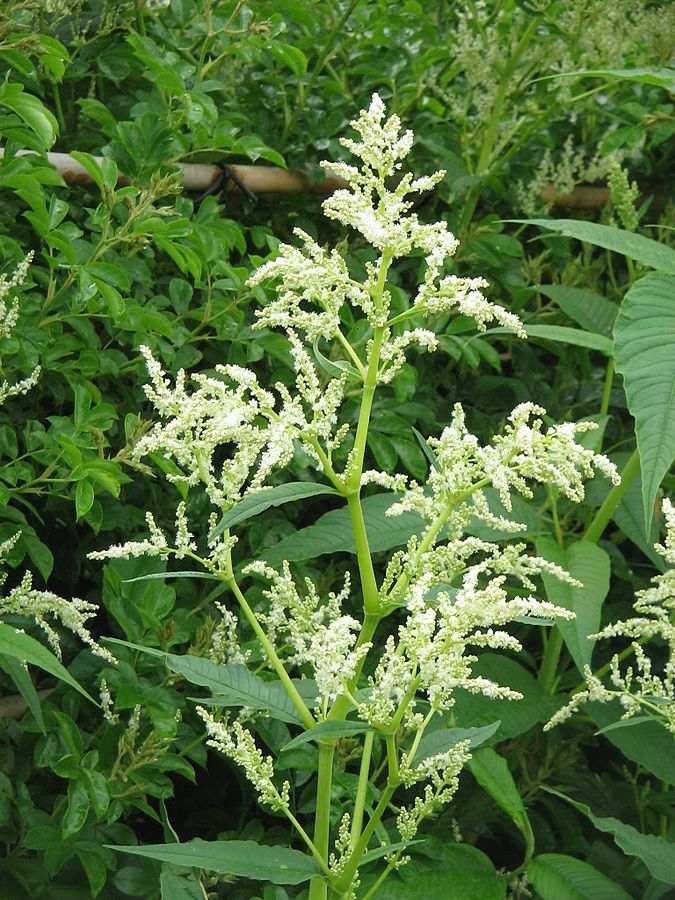Himalayan Knotweed

Himalayan Knotweed
(Polygonum polystachyum)
Priority: - Contain / Annual Control
Tags: Aquatic | Terrestrial
Identification and Reproduction
Identification:
- Himalayan knotweed is a perennial, herbaceous plant with a woody root.
- Stems are 2-3 m tall and are branched in the upper half. Canes are hollow and have jointed nodes.
- New shoots start to arise during the early spring. They are very fast growers and can reach full height by the end of June.
- Mature leaves are lance shaped and can reach 20 cm in length. They have stiff hairs on the leaf edges and are tapered at the end.
- Flowers are found in branched clusters, ranging from white to pink.
Reproduction:
- Knotweeds are perennials that spread primarily vegetatively.
- It is aggressive much like other knotweed species.
- They can also reproduce through rhizomes.
- Rhizome pieces as small as 2 cm can re-sprout.
Habitat & Ecology
- Thrive on freshly disturbed soil in roadside ditches, low-lying areas, irrigation canals, and other water drainage systems.
- Can grow in loamy, silty or sandy soils but prefers moist soil.
Impacts
Social:
- Create dangerous situations by obstructing sightlines along roadsides.
- Damage infrastructure like buildings, sidewalks/roads, or drainage system
Ecological:
- Form dense monocultures.
- Increase erosion on streambanks.
- Destroy natural habitat for native species.
Management
Since management for Himalayan knotweed is similar to Japanese, Bohemian, and Giant knotweed - please refer to the Knotweed Species information page for futher management options and details
Resources
Download the Alberta Invasive Species Council's Factsheet on Himalayan Knotweed here.
Download the Invasive Species Council of BC's Factsheet on invasive knotweeds here.
Downlad the Metro Vancouver's Best Management Practices for the Knotweed Species here.
Header photo (Vinayaraj).
Photo Gallery


×






